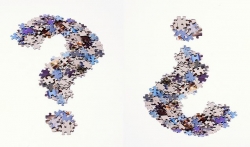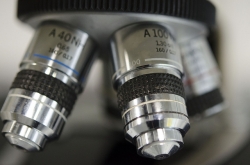What is Science?Science is a very specific way to learn or know about the world. The history of the past 500 years shows that it is a very powerful way of knowing about the world. It is largely the reason behind all the new changes in many tools we use, even the one you are using to read this! There are, however, some parts of life that we cannot use science for. These are such things as answering questions about what is right or wrong or questions about beauty. We are not able to measure or observe these questions or their answers.
The scientific method is a way to look into the world using steps. One of the most important parts of it is starting with a
hypothesis, which is a possible way to explain an event that can be tested. These are mostly made with the ideas of a
scientific theory in mind, which is a generally accepted idea that is found to be true. In many fields, there are
scientific laws. They describe how parts of the world will act if certain things are true, with numbers and a mathematical equation. Hypotheses, theories, and laws are all connected. Scientists spend most of their days working with a hypothesis.

What do you want to know?
Roland O'Daniel/Flickr.com
Scientific Inquiry
There is one thing that is true about every single form of science. The goal is "to know." Those who study science want to figure out the world and the way it works. They use two ways of thinking to try to understand the world.
Inductive reasoning is a way to think that uses many observations to come to a general conclusion. A life scientist closely looks at the world and records what he or she sees. What they record can be words-based or numbers-based. What they discover can be added to using drawings, pictures, or other things that can be shared. From spending a lot of time looking at the world, they can come up with conclusions. These are otherwise known as inductions. They are based on evidence. This way to think has to do with big ideas that come from careful review and studying of the world around us. Brain studies often work this way. Many brains are looked at while people are doing a task. The part of the brain that lights up during these studies is the part that is in charge of the way that the brain acts in response to that task. The light shows that something is happening in that part of the brain.

Inductive reasoning begins with observations.
liverpoolhls/Flickr.com
Deductive reasoning is where we take a big idea and use it to come to many different conclusions. This kind of thinking moves in the other direction of induction. It is a way to think that uses a general law to figure out what might happen. From those general laws, a person can come up with smaller ideas and try to figure out the what would happen as long as the general laws are true. One way to see this in action is that if the climate, or the weather in a certain place, is becoming warmer, the kinds of plants and animals found in that place should change. We can compare those numbers from the past and the present, and say that the many changes we find are due to the warmer weather. Finding the change in how life is spread out shows that what we decided about the change in weather over time makes sense.
Both kinds of thinking are connected to the two major ways to go about scientific study. In one way, we closely watch, explore, and discover. The second way begins with a question and a possible answer that can then be tested. There is often no clear line between these two forms of study because most scientific work uses both ways to try to understand and learn. Observations lead to questions, questions lead to a hypothesis as a possible answer, and that is tested to try and find the answer. These two kinds of science work together all the time and help us figure out the world around us.